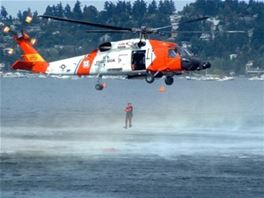
News Details
EPIRB DEVICES FOR SAFER BOATING Posted on March 31, 2015

At least several times a year, there are amazing rescue stories told about boaters that were lost at sea and survived days or weeks adrift on a disabled vessel. While these stories of survival are inspiring, their plight may have been avoided with an essential boating safety device: Emergency Position Indicating Radio Beacon (EPIRB).
How EPIRB Devices Work
An EPIRB device is specifically designed for use in the marine environment. Battery-powered, an EPIRB is a last-resort emergency communication device when marine VHF radios are no longer operative.
Regardless of the style or category of an EPIRB, they are all designed to float and send out an emergency signal continuously for 48 hours after activated. The signal is detected by overhead satellites that pass by a boat’s location. The homing in on a boat’s location from the EPIRB signal can take some time, as it depends on locations of available satellites.
An EPIRB is particularly useful for vessels that operate offshore or engage in long-range cruising. These types of boats are more likely to encounter emergencies at sea such as engine troubles, empty marine fuel, taking on water, capsizing from foul weather or other unforeseen disasters.
Types of EPIRB Devices
There are two types, or categories, available for EPIRB devices. Functionality, accuracy range and detection ability varies by category.
- Category I EPIRB- A 406 MHz EPIRB is known as a category I emergency beacon. The 406 MHz model includes a signal encoded with boat information as well as 121.5 MHz signal used for homing. With a category I EPIRB there is a 1.5 nautical mile accuracy and global detection of signals throughout international waters. These features greatly reduce response time and provide valuable information for search and rescue teams to find a boat at sea.
- Category II EPIRB – A 121.5/243 MHz EPIRB device is known as a category II emergency beacon. 121.5 MHz beacons were designed for aircraft detection and are often incompatible with global satellites. With a category II EPIRB, a regional earth station is needed for detection, which is not available in most ocean areas. Locations are identified within 10-20 nautical miles of accuracy with category II EPIRB devices, causing response time of search and rescue teams to be longer. Multiple passes of satellites are typically required to identify signals, delaying response time even further.
Choosing the Best EPIRB Device
Although category II beacons are useful and less expensive (approximately $400), they are generally recommended for use closer to shore. A 406 category I EPIRB is required equipment for all U.S. merchant vessels or commercial fishing boats that go offshore beyond three nautical miles. It would be wise for larger yachts travelling long distances to destinations such as the U.S. Virgin Islands or international waters to also carry a category I EPIRB on board.
According to NOOA.gov, it is very important to register a 406 MHz EPIRB device. A registered beacon will provide search and rescue crews with valuable boat and contact information, helping Coast Guard rescue crews locate a boat faster in an emergency. A registered emergency beacon will provide boaters peace of mind that the potentially life saving safety device is on board.
Source: www.articles.boattrader.com